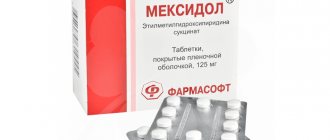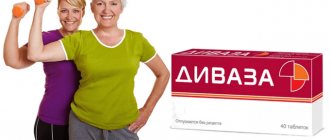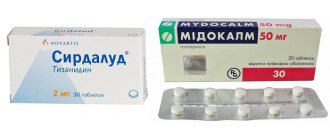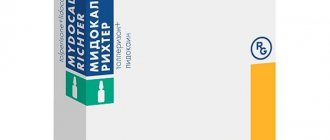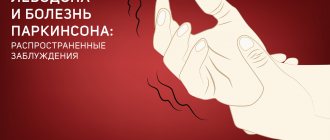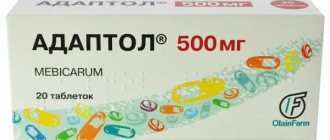pharmachologic effect
Antipsychotic drug (neuroleptic). It has antihistamine, antispasmodic, serotonin-blocking, moderate alpha-adrenergic blocking, antiemetic, hypnotic, sedative and antitussive effects.
The antipsychotic effect is due to the blockade of dopamine D2 receptors in the mesolimbic and mesocortical systems. It has low antipsychotic activity, therefore it is ineffective in acute psychotic conditions.
The sedative effect is due to the blockade of adrenergic receptors in the reticular formation of the brain stem.
The antiemetic effect is due to the blockade of dopamine D2 receptors in the trigger zone of the vomiting center.
The hypothermic effect is due to the blockade of dopamine receptors in the hypothalamus.
Due to its good tolerance, it is used in children's, adolescent and gerontological practice.
Nervous tics in children. How to deal with them?
Yuri
Nervous tic Nervous tic Nervous tic can be cured without pills.
A new trance-pulse method has been created to help people suffering from this disease. No doctor will tell you that a nervous tic poses a great danger to health. You will be advised not to worry and pay less attention to your illness. They may also prescribe sedatives. If we consider this disorder from an energetic point of view, then your condition is not so good. A nervous tic, the medical name “hyperkinesis”, is a reflexive impulsive movement of various parts of the body and the production of unnecessary and unnecessary sounds, causing a person a lot of anxiety. This creates a huge overstrain of the central nervous system and a constant change in state and mood. What it’s like to live in constant tension is known to many. The human psyche is changing and there is less and less room for joy and a cloudless good mood. You may find out that in modern medicine there is no universal remedy or cure for treating nervous tics, and the doctor will not be able to guarantee you anything. The real obstacle is a nervous tic when people want to make a career in the military, police and other public professions. For a person with excellent knowledge and health, the path to studying at many specialized universities may be closed, as well as a career. This circumstance forced us to seriously study this disease and create a method of liberation from it. The results are there and they are encouraging. The concept of this method and the mechanism that creates a nervous tic is for the first time based not on the possibility of disturbances in muscle groups, ligaments and tendons, but on the disruption of the relationship of these structures. The interconnection of muscle groups, ligaments and tendons is carried out using impulses emanating from the brain and the central nervous system. And in the case of disturbances in parts of the body in the form of trembling and twitching, the cause should be sought not in tissue structures, but in a malfunction and disruption of the impulse relationship. What can violate it? The presence of extraneous impulses that create a malfunction and emit negative charges of a certain type. These charges are capable of penetrating the central nervous system and entering the human body in various ways, but there are several main ones: fear, severe shock, prolonged anxiety, tension and anticipation of danger. Impulses of information interconnection are an energy category that has certain fluctuations and wave parameters. And you need to look for violations in this direction. The thing is that the cause of the disease lies in the energy potential of a person, and medicine does not study this structure of the human body. A person becomes excited by an impulse, which then begins to torment him, creating involuntary impulsive movements. The generator of this impulse is a negative negative charge formed in the energy structure as a result of the shocks and experiences experienced. Nervous tic is a psychosomatic disease. This process arises as a state of not entirely accurate functioning of a certain part of the central part of the brain, which is in excitement. It periodically sends an impulse that causes the most sensitive part of the central nervous system to react, and the person begins to shudder impulsively, and some unnatural movements begin. With the help of a session of the trance-pulse method, you can effectively remove this negative charge, removing it from the body. What happens afterwards? After the session, processes begin to form that restore the entire central nervous system. Your body needs to get rid of all the habits, spasms, irritations, muscle clamps that you have formed and created as some kind of reflexes, as responses to irritants that have existed all this time. The muscles contracted and managed to develop a movement formed over a huge period of time, like a reflex. It constantly exists in your muscles, and therefore the shaking of various parts of the face and body will continue. In order for the reflex to disappear, it is necessary for the body to go through a long-term recovery period, just as the reflex forms a certain movement. And even if you do not strive to create this movement, the reflex will always remind you that you need to make this movement. And you will subconsciously strive for this movement, react, and only after a certain period of time will you be able to get rid of this obsessive state. Over a period of time, you will find that these movements are almost imperceptible, although you will sometimes feel that they exist. Reflexes and clamps are the so-called muscle memory; they can persist for a fairly long period of time and remain in your body until the part of the central nervous system that previously formed this movement is restored. Based on the research conducted, it was possible to establish a stage-by-stage state of recovery during the rehabilitation period. Stage 1. Approximately two weeks after the session, a general improvement in well-being and mood begins. There is an increase in vitality, a feeling of optimism and joy of life appears. Stage 2. The nervous tic exists, but no longer causes the patient to feel irritated. Tension and anxiety go away. The patient stops noticing and feeling the nervous tic. Stage 3. Gradual extinction of the muscle reflex. Tics become less and less noticeable and then gradually slowly disappear completely. (The duration depends on the individual characteristics of the body.) Features of the rehabilitation period. You must clearly and clearly imagine the following picture. Your body is now overstimulated by the negative energy that was in it, and it is now unable to change quickly. After all, the entire central nervous system consists of certain energy impulses that were involved in such an unpleasant event as the ability to respond to the influence of this negative charge. And therefore, for some period of time, you may continue to have unpleasant sensations, and it will seem to you that nothing happened. This is due to the fact that the central nervous system tends to remain for some time in the same state that it experienced before. And only after a certain period of time (several weeks) will you suddenly feel a huge surge of vitality within yourself. There is no need to worry about the fact that your body will undergo restructuring for some period of time. In this regard, you may experience some difficulties, some uncertainty may arise, and you may not feel comfortable enough. You felt the impact on yourself, which created everything you needed so that you could completely rid yourself of these unpleasant conditions in the form of a reaction of your central nervous system to the excitement that this negative charge was constantly creating. And therefore, now you just have to be patient and not create any negative states in yourself. You should not worry and strain your central nervous system, due to the fact that it will seem to you that time is passing slowly, that you do not look normal enough and that you do not have enough control over your facial expressions. You are now at the stage when your body has completely gotten rid of this negative charge, but it will remain in this state for quite some time, since the parameters of the central nervous system are not able to change completely now. And only after a certain period of time will the central nervous system can finally return to its original state. And you will discover in yourself a huge reserve of vitality, an emotional outburst and enormous strength of pleasant emotions. And you will feel like a healthy person. If you still think that you are in your previous state, then you just need to endure all your doubts and worries with or without reason and realize that finally your former cheerfulness, emotionality and self-confidence are returning to you. Based on materials from the site www.metodtim.ru April 20, 2014 14:49
Indications for use of TERALIGEN®
- neuroses and neurosis-like conditions of endogenous and organic origin with a predominance of senestopathic, hypochondriacal, phobic and psychovegetative disorders;
- psychopathy with asthenic and psychoasthenic disorders;
- anxiety-depressive conditions within the framework of borderline endogenous and vascular diseases;
- senestopathic depression;
- somatized mental disorders;
- states of excitement and anxiety in somatic diseases;
- sleep disorders of various origins;
- allergic reactions (symptomatic treatment).
Dosage regimen
The drug should be taken orally, dividing the daily dose into 3-4 doses.
The onset of action of the drug is after 15-20 minutes, the duration of action is 6-8 hours.
For adults, to achieve a hypnotic effect, 5-10 mg per day; to achieve an anxiolytic effect, 60-80 mg per day. For psychotic conditions - 200-400 mg per day.
Children over 7 years of age (depending on age and body weight) to achieve a hypnotic effect, 2.5-5 mg per day; as a symptomatic treatment of allergic reactions, 5-20 mg per day; to achieve an anxiolytic effect, 20-40 mg per day; in psychotic conditions, it is possible to increase the daily dose of the drug to 60 mg per day.
Release form and composition
Dosage forms of Teraligen:
- film-coated tablets: dark pink, with a stripe on one side and an embossed symbol on the other side (10 or 25 pieces in a strip pack, 1, 2 or 5 packs in a cardboard pack);
- solution for intramuscular administration and infusion: slightly colored or colorless, slightly opalescent or transparent liquid (5 ml in ampoules made of light-protective glass, 5 ampoules in a blister pack made of polyvinyl chloride film, 1 or 2 packages in a cardboard pack).
Composition of 1 tablet:
- active substance: alimemazine tartrate – 5 mg;
- excipients: lactose – 90 mg, wheat starch – 42 mg, sucrose (refined sugar) – 14 mg, talc – 2 mg, tapioca starch (tapioca) – 2 mg, magnesium stearate – 1.5 mg;
- shell: hypromellose – 4 mg, titanium dioxide – 0.1 mg, talc – 1 mg, macrogol 6000 – 0.4 mg, pink dye Osprey R110 – 0.3 mg.
Composition of 1 ml solution:
- active substance: alimemazine tartrate (in terms of dry matter) – 5 mg;
- excipients: ascorbic acid – 1 mg, sodium sulfite – 0.5 mg, water for injection – up to 1 ml.
Side effect
From the central nervous system and peripheral nervous system: drowsiness, lethargy, fatigue (occurs mainly in the first days of taking the drug and rarely requires discontinuation of the drug), paradoxical reaction (restlessness, agitation, nightmares, irritability); rarely - confusion, extrapyramidal disorders (hypokinesia, akathisia, tremor); increased frequency of night apnea, increased seizure activity (in children).
From the senses: blurred visual perception (accommodation paresis), noise or ringing in the ears.
From the cardiovascular system: dizziness, decreased blood pressure, tachycardia.
From the digestive system: dry mouth, gastrointestinal atony, constipation, loss of appetite.
From the respiratory system: dry nose, throat, increased viscosity of bronchial secretions.
From the urinary system: bladder atony, urinary retention.
Other: allergic reactions, inhibition of bone marrow hematopoiesis, increased sweating, muscle relaxation, photosensitivity.
The drug is usually well tolerated by patients. Side effects are rare and mild.
Reviews
Doctors' reviews of Teraligen are positive, however, they note that the drug should not be taken without a prescription, as this can only worsen the patient's condition. Many patients write about the effectiveness of the drug Teraligen, its speed and lack of side effects.
In addition, there are reviews from consumers for whom the drug did not help; many also write about severe side effects, in particular weakness, drowsiness, and dizziness. Regarding its use for children, reviews are positive. This drug is safe for children as it is very well tolerated.
Contraindications to the use of TERALIGEN®
- angle-closure glaucoma;
- prostatic hyperplasia;
- severe liver disease;
- severe kidney disease;
- parkinsonism;
- myasthenia gravis;
- Reye's syndrome;
- simultaneous use of MAO inhibitors;
- pregnancy;
- breastfeeding period;
- children under 7 years of age;
- hypersensitivity to the components of the drug.
The drug should be used with caution in chronic alcoholism if there is a history of complications when using phenothiazine drugs, obstruction of the bladder neck, predisposition to urinary retention, epilepsy, open-angle glaucoma, jaundice, suppression of bone marrow function, arterial hypotension.
special instructions
During long-term treatment, a general blood test should be systematically performed and liver function assessed.
Alimemazine may mask the ototoxic effect (tinnitus, dizziness) of co-administered drugs.
To prevent distortion of the results of skin prick tests for allergens, the drug should be discontinued 72 hours before allergy testing.
During treatment, false positive pregnancy test results are possible.
During treatment you should not drink alcohol.
Patients' opinions
Many of the patients taking or taking Teraligen were satisfied with the result, as confirmed by numerous reviews.
The doctor diagnosed panic disorder, anxiety, and prescribed Teraligen. Before this, no sedatives helped at all (even expensive and advertised ones).
And then, after the first pill, I noticed that those things that previously irritated me did not bother me at all. I take two tablets a day, my performance, reaction and mental activity have not worsened. I feel great.
Arseniy, 49
I had a fairly severe nervous breakdown and began to experience insomnia and insurmountable fears. I tried to fight with the help of well-known remedies like Glycine and hawthorn tincture. Did not help. The doctor recommended Teraligen for me to take 1 tablet before bed for one month.
The drug drowned out my fears (that is, I seem to have anxious thoughts, but at the same time they don’t bother me at all). The problem with insomnia is also solved. But there is a significant drawback - during the day you constantly want to sleep.
Valera, 34
Drug interactions
Alimemazine enhances the effect of opioid analgesics, hypnotics, anxiolytic (tranquilizers) and antipsychotic (neuroleptics) drugs, as well as drugs for general anesthesia, m-anticholinergic drugs and antihypertensive drugs. The dose of alimemazine should be adjusted when used concomitantly with the above-mentioned drugs.
With the simultaneous use of alimemazine with amphetamine derivatives, m-cholinomimetics, ephedrine, guanethidine, levodopa, dopamine, the effect of the latter is weakened.
When alimemazine is used concomitantly with ethanol and drugs that depress the central nervous system, central nervous system depression is observed.
With the simultaneous use of alimemazine with antiepileptic drugs and barbiturates, the threshold for convulsive readiness is reduced (dose adjustment of the drug is required).
With the simultaneous use of alimemazine with beta-blockers, the concentration of the latter in the plasma increases (a pronounced decrease in blood pressure and arrhythmias is possible).
With the simultaneous use of alimemazine with bromocriptine, the effect of the latter weakens and the concentration of prolactin in the blood serum increases.
With the simultaneous use of alimemazine with tricyclic antidepressants and anticholinergic drugs, the m-anticholinergic activity of alimemazine is enhanced.
With simultaneous use of alimemazine with MAO inhibitors and phenothiazine derivatives, the risk of arterial hypertension and extrapyramidal disorders increases (simultaneous use is not recommended).
With the simultaneous use of alimemazine with drugs that inhibit bone marrow hematopoiesis, the risk of myelosuppression increases.
With the simultaneous use of alimemazine with hepatotoxic drugs, the manifestations of hepatotoxicity of the drug increase.
What are the analogues of the drug Teraligen?
A complete analogue is Alimemazine tartrate. The following drugs belong to the category of antipsychotics:
- Ketiap.
- Clozapine.
- Speridan.
- Closasten.
- Propazin.
- Droperidol.
- Aminazine.
- Quetiapine.
- Solian.
- Majeptyl.
- Seroquel.
- Risperpet.
- Nantharid.
- Clopixol.
- Leponex.
- Rezalen.
- Olanex.
- Azaleptin.
- Torendo.
- Leptinorm.
- Fluanxol.
- Etaperazine.
- Serdolect.
- Tiapride.
- Parnasan.
- Abilify.
- Senorm.
- Servitel.
- Olanzapine.
- Rilept.
- Prosulpin.
- Galoper.
- Chlorprothixene.
- Thiodazine.
- Haloperidol.
- Betamax.
- Trazyn.
- Zyprexa.
- Tizercin.
- Aripiprazole.
- Eglonil.
- Truxal.
- Zilaksera.
- Tison.
- Chlorpromazine.
- Sonapax.
- Eglek.
- Limipranil.
- Risperidone.
- Triftazin.
- Moditen.
- Normiton.
- Sulpiride.
- Ketilept.
- Zeldox.
- Prolinate.
- Ridonex.
- Victoel.
- Rispen.
- Thioridazine.
